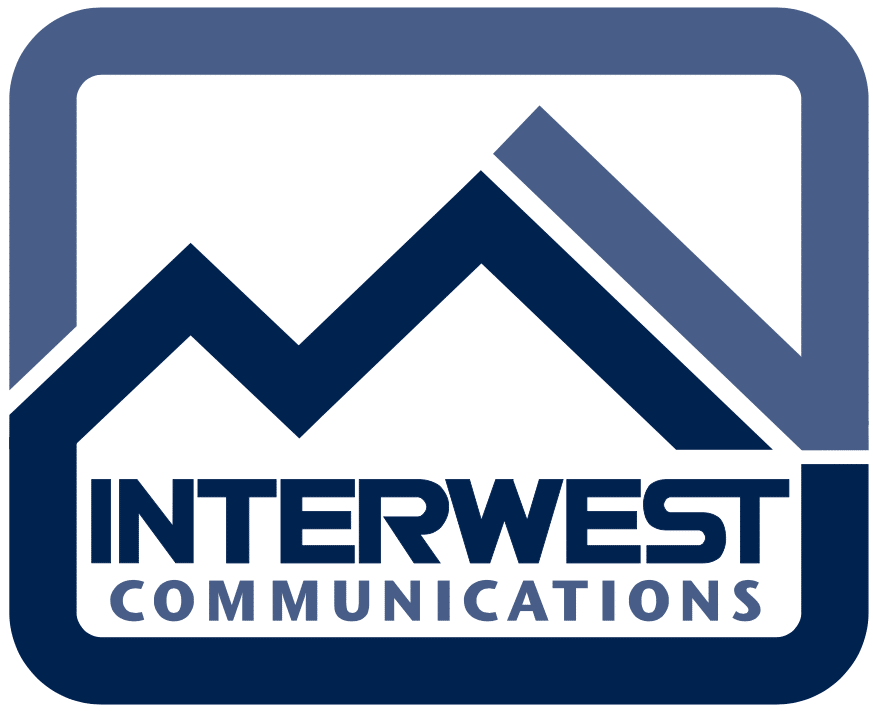- June 24, 2025
- Posted by: Interwest Communications Team
- Categories: Business plans, News

Originally posted on December 20, 2024 @ 4:36 am

How Much Does VoIP Cost Per Month? A Detailed Pricing Guide
Clinging to outdated phone systems might just be draining your bank account while you miss out on the nifty tools that put modern businesses on the express track.
Voice over Internet Protocol (VoIP) has revolutionized business communication by offering affordable, scalable, and feature-rich solutions for companies of all sizes. Whether you’re a growing startup or an established enterprise, you need to understand the total cost of VoIP and how it can benefit your bottom line.
In this guide, we’ll break down small business VoIP pricing, hidden costs, and key considerations for both business owners and IT decision-makers. We’ll also answer the question “How much does VoIP cost per month,” to help you determine the best solution for your business.

Why Businesses Are Moving to VoIP
The demand for efficient, scalable, and remote-friendly communication tools has never increased. Traditional phone systems are expensive to maintain and need more flexibility than modern businesses require. Here’s why companies are making the switch:
-
- Cost Savings: Switching to VoIP can reduce phone expenses by up to 50–80%, particularly for businesses making frequent long-distance or international calls.
Hypothetical Example: A small retail chain saved $12,000 annually by replacing their outdated landlines with VoIP, freeing up funds to reinvest inventory. - Advanced Features: VoIP offers tools like auto-attendants, call routing, analytics, and CRM integration—capabilities that traditional systems often lack.
- Remote Work Compatibility: VoIP empowers employees to work from anywhere, using laptops, smartphones, or IP phones.
- Scalability: Adding or removing users in a VoIP system is seamless compared to traditional systems requiring costly rewiring.
- Unified Communication: VoIP combines calling, video conferencing, instant messaging, and more into a single, integrated platform.
- Cost Savings: Switching to VoIP can reduce phone expenses by up to 50–80%, particularly for businesses making frequent long-distance or international calls.
These benefits make VoIP a compelling solution for businesses seeking cost-efficiency and modern communication tools.
Key Takeaways
- VoIP systems typically cost less per month than traditional phone setups, offering budget-friendly solutions for businesses.
- Additional features and the scale-up flexibility make VoIP a long-term value proposition.
- Evaluating all associated costs ensures a clear understanding of VoIP’s financial impact.
Key Components of VoIP Costs
If you’re wondering “how much does VoIP cost per month”, VoIP pricing consists of several elements. Understanding these components helps businesses predict and manage their overall expenses.
1. Hardware Requirements
VoIP hardware often includes:
- IP Phones: Internet-ready devices optimized for VoIP.
- Headsets: Useful for call centers or remote workers.
- Routers and Switches: Ensure strong network performance.
Small businesses can reduce costs by reusing existing devices or opting for software-based “softphones.”
2. Monthly Service Fees
Monthly subscription fees form the core cost of VoIP services and vary based on:
- Number of Users: Most VoIP plans for businesses charge per user or line.
- Feature Packages: Advanced tools like video conferencing or analytics may increase pricing.
- Call Volume: Unlimited domestic plans benefit high-volume businesses, while smaller teams may save with metered plans.
- International Calling: Global communication often incurs extra charges.
For Startups: Basic plans ($20–$30/user) provide essential features like voicemail, call forwarding, and limited minutes.
For Growing Businesses: Mid-tier VoIP plans for businesses ($30–$50/user) offer features like auto-attendants and unlimited domestic calls.
For Enterprises: Premium plans ($50–$100/user) include advanced tools, unlimited international calling, and scalability for complex needs.
Hypothetical Example: A mid-sized legal firm reduced monthly phone expenses by 60% with a mid-tier VoIP plan, enabling efficient communication between multiple office locations.
3. Setup Fees and Internet Upgrades
- Setup Costs: Some providers charge for installation, particularly for enterprise-level configurations.
- Internet Upgrades: Reliable VoIP performance requires sufficient bandwidth. Businesses may need to upgrade their internet plans for seamless call quality.
Rule of Thumb: Each VoIP call uses 100 kbps of bandwidth, so ensure your internet can handle your team’s needs.
4. Training and Maintenance
Transitioning to VoIP requires training, particularly for teams unfamiliar with digital communication systems. Many providers offer onboarding support, but businesses should plan for:
- Training Programs: Short-term productivity dips during the transition.
- Ongoing Support: While some providers offer free maintenance, others charge separately.
Monthly Subscription Costs
The monthly fees for VoIP services depend largely on the provider and plan type. Basic plans for small businesses typically cost $20–30 per user, while more advanced plans can range up to $50 or more.
Entry-Level Plans
These typically include:
- Limited phone lines.
- Basic features like voicemail and call forwarding.
- Modest monthly minute allowances.
These plans are ideal for startups or smaller businesses primarily using VoIP for standard communication needs.
Mid-Tier Plans
Often priced between $30–50 per user, these VoIP plans for businesses expand on entry-level offerings by providing:
- Additional phone lines.
- Features like auto-attendants and call recording.
- Larger minute allowances or unlimited domestic calling.
Mid-tier plans are a great fit for growing businesses that require advanced functionality without breaking the budget.
Premium Plans
High-end plans, which may cost $50–100 or more per user, typically offer:
- Unlimited lines.
- Comprehensive feature sets.
- International calling options.
These VoIP plans for businesses are tailored for enterprises or organizations with complex communication needs, such as multi-location coordination or international operations.
Some providers charge per “seat” instead of per user, allowing cost savings for shared phones. Comparing plans and utilizing free trials is an effective way to identify the most cost-efficient solution.
Factors That Impact VoIP Costs
Several elements influence how much businesses pay for VoIP services.
-
- Number of Users: Larger teams naturally incur higher monthly fees.
- Call Volume: Domestic calls are often unlimited, but international calling can add to costs.
- Advanced Features: Options like call analytics, video conferencing, and IVR systems may require additional charges.
- Hardware: Businesses that choose softphones reduce costs, but IP phone investments can increase initial expenses.
- Internet Bandwidth: Sufficient bandwidth ensures smooth VoIP performance but may necessitate internet upgrades.
The scalability of VoIP systems is also a factor. While scaling typically increases costs, many providers offer discounts for large user bases or long-term contracts.
Identifying Hidden Costs
Although VoIP systems are cost-efficient, businesses should consider potential hidden costs.
Common Additional Expenses
- Number Porting: While some providers offer free porting, others charge fees.
- Installation and Hardware: Professional setup and new devices may increase initial expenses.
- Add-Ons: Advanced features, CRM integrations, or analytics tools often cost extra.
- Taxes and Fees: Regulatory charges vary by provider and location, sometimes adding 10–20% to the bill.
Unexpected Costs
- Metered Plans: These plans can result in unanticipated charges for high-volume users.
- Maintenance and Upgrades: Keeping hardware and software current adds periodic expenses.
Understanding these potential costs helps businesses make fully informed financial decisions.
Comparing VoIP to Traditional Systems
VoIP provides significant cost advantages over traditional phone systems. Here’s an overview of small business VoIP pricing:
How Much Does VoIP Cost Per Month: Cost Breakdown
| Expense Type | Traditional Phone Systems | VoIP Systems |
| Installation | $500–$2000+ | $0–$200 |
| Monthly Costs | $400–$1000 | $200–$500 |
| Long-Distance Fees | Charged per minute | Often included |
In addition to cost savings, VoIP offers superior flexibility and advanced functionality. Features such as video conferencing, voicemail-to-email transcription, and seamless device integration make it an indispensable tool for modern businesses.
Long-Term Value and Scalability
VoIP systems are inherently scalable, making them ideal for growing businesses. Cloud-based solutions, in particular, allow easy adjustments to user counts and feature sets through online dashboards.
Small Business VoIP Pricing Advantages
- Reduced maintenance fees.
- Lower international call rates.
- Elimination of physical infrastructure costs.
Choosing a VoIP system that scales with your needs ensures long-term savings and improved efficiency.
Choosing the Right VoIP Solution
When considering how much does VoIP cost per month, selecting the best VoIP solution for your business involves evaluating key factors:
- Total Cost of Ownership: Account for hardware, service fees, and savings from reduced call costs.
- Scalability: Ensure the system can grow with your business.
- Feature Sets: Identify which tools (e.g., auto-attendants, call recording) align with your needs.
- Internet Quality: Ensure sufficient bandwidth for VoIP demands.
- Security: Verify encryption and other security measures.
Pro Tip: Compare providers, take advantage of free trials, and consult user reviews to find the best fit for your business.
Is VoIP Right for Your Business?
VoIP offers substantial cost savings, advanced tools, and unmatched flexibility, making it an ideal solution for modern businesses. By understanding the components of small business VoIP pricing and identifying hidden costs, you can confidently determine whether VoIP aligns with your business needs.
Ready to Take the Next Step?
Explore VoIP solutions tailored to your company with Interwest Communications. Interwest offers cost-effective VoIP plans for businesses that scale with your growth, from small businesses to enterprise-level solutions.
Make the switch today—and transform how your business communicates.
